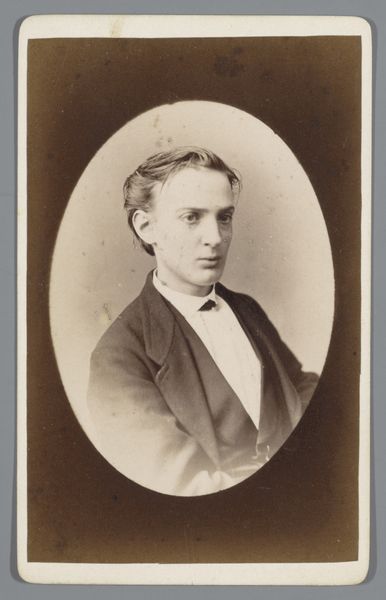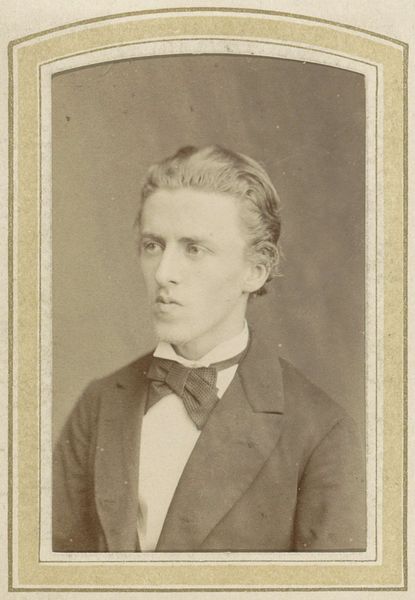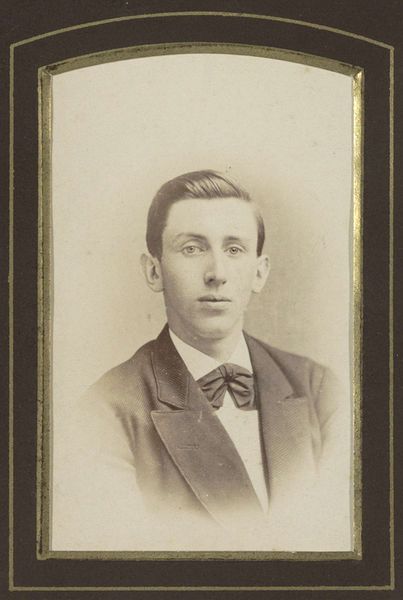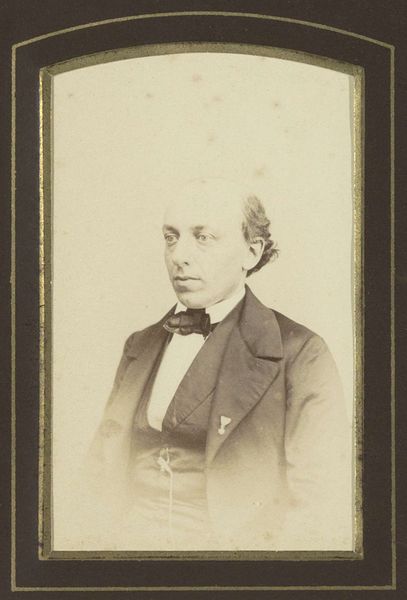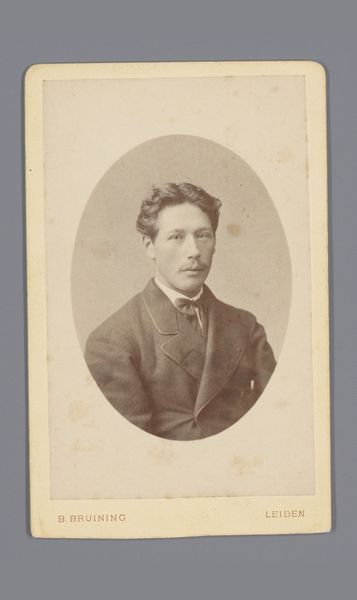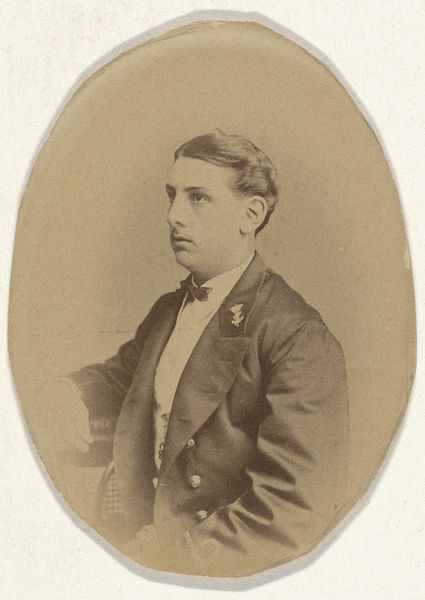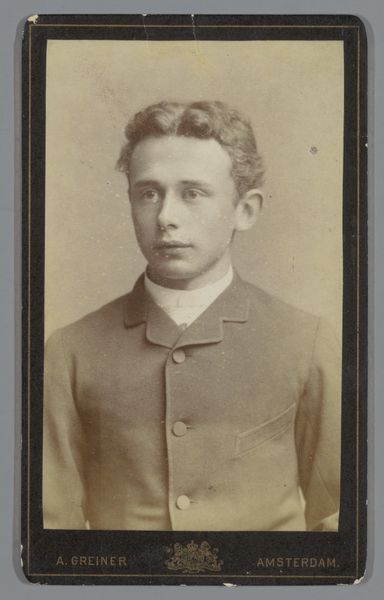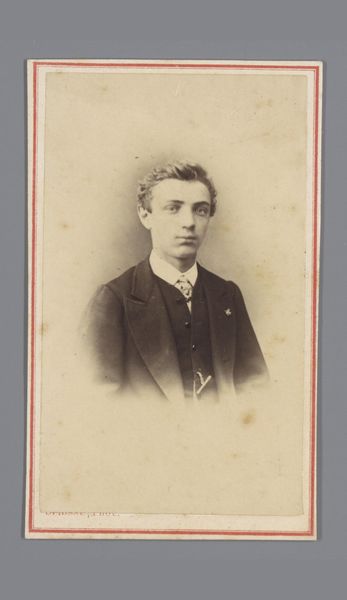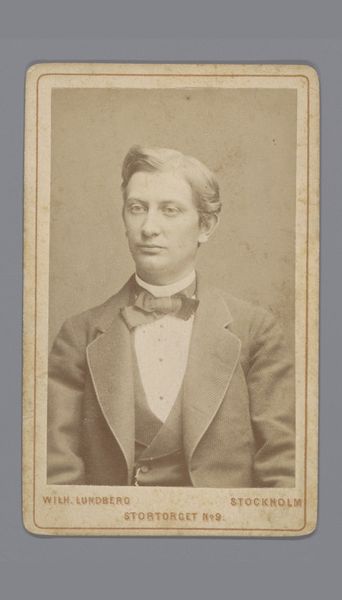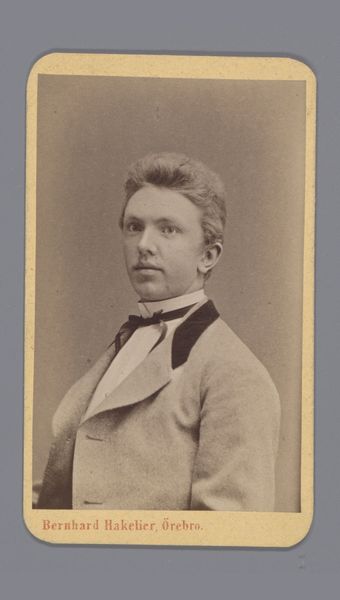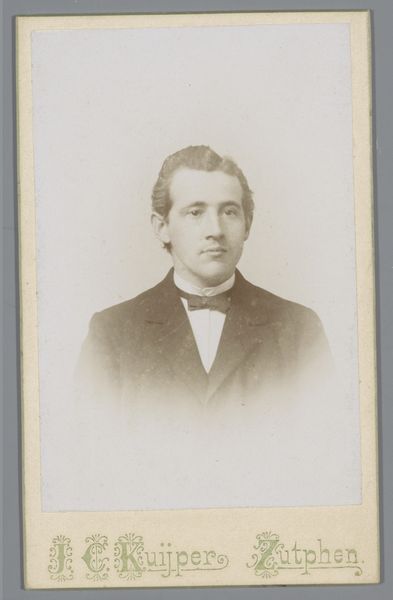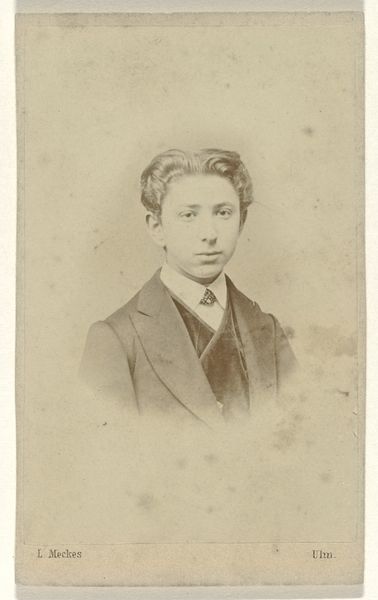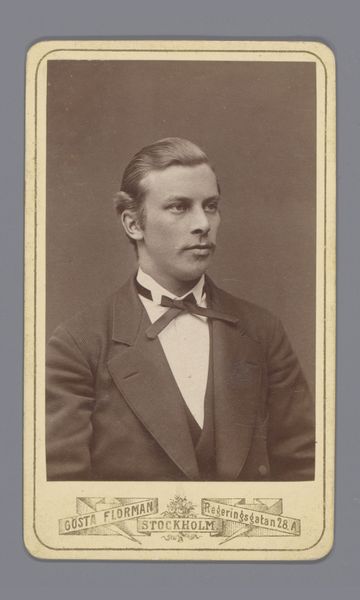
photography, gelatin-silver-print, albumen-print
#
portrait
#
photography
#
portrait reference
#
gelatin-silver-print
#
albumen-print
#
realism
Dimensions: height 98 mm, width 63 mm
Copyright: Rijks Museum: Open Domain
Curator: This gelatin-silver print, "Portret van George Doorman," believed to have been captured by Albert Greiner sometime between 1874 and 1887, presents a fairly typical formal portrait of the period. What are your initial impressions? Editor: Stark simplicity. The almost sepia tones give it a sense of subdued melancholy. It’s carefully composed with the subject's gaze slightly off-center, which avoids a static, lifeless stare. The tonality seems even throughout, but there is more detail in the face. Curator: Indeed. Let’s consider the socio-economic context. Photographic portraits became increasingly accessible to the middle class during this period. They provided a means of memorialization and self-presentation that was once limited to the wealthy elite who could afford painted portraits. The subject's attire, a neat double-breasted coat and bow tie, speaks to a degree of middle-class respectability. Editor: The surface is smooth, perhaps heavily toned or manipulated in processing. Notice the absence of strong contrasts—this enhances the sense of calm and restraint. His expression too is muted; there is no trace of frivolity or a wide toothy smile. Curator: The question of how the print was created also speaks to an important shift in the labor of artistic production. Studio photographers employed various assistants for posing, developing, and printing. In that sense, it complicates the myth of the singular artistic genius; many hands worked to create this image. Editor: I see how one might view that material process through a materialist lens; I would counter, however, that Greiner, as the artist-photographer, composed and directed that whole process, controlling tonal scale and focus. His is still the controlling aesthetic. Curator: Fair enough. I find it remarkable how photography democratized portraiture, yet still managed to encode existing social hierarchies through subtle visual cues like posture, clothing, and even the choice of background. These portraits, while seemingly simple, contain volumes about the society that produced them. Editor: A powerful glimpse into another era, rendered beautifully, I might add. Thank you.
Comments
No comments
Be the first to comment and join the conversation on the ultimate creative platform.
